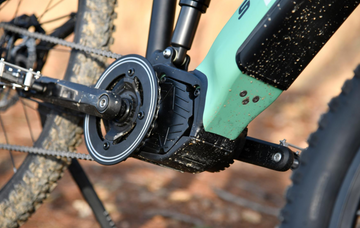The Impact of Fluid Mechanics on Sliding Friction in Hydraulic Braking Systems
by YunaLi on Mar 14, 2025

Hydraulic braking systems are essential in modern vehicles, providing efficient and reliable stopping power. A critical aspect of their performance is sliding friction, which directly affects braking effectiveness. Fluid mechanics plays a significant role in optimizing frictional forces within the system, influencing braking efficiency, wear resistance, and overall safety. In this blog, we explore how fluid dynamics impact sliding friction in hydraulic brakes and why understanding these effects is essential for performance optimization.
How Fluid Mechanics Affects Sliding Friction in Hydraulic Brakes
1.Fluid Pressure and Frictional Force
Hydraulic brakes function by transmitting force through incompressible brake fluid. When the brake pedal is pressed, hydraulic pressure is distributed evenly, forcing the brake pads against the rotors. This pressure directly affects the normal force on the braking surfaces, which determines the sliding friction required to stop the vehicle efficiently.
2.Viscosity and Brake Response
The viscosity of brake fluid plays a crucial role in system efficiency. If the fluid is too viscous, it can slow down pressure transmission, leading to delayed braking response. Conversely, low-viscosity fluid may result in inadequate pressure buildup, reducing the friction force and braking efficiency. Selecting the right brake fluid viscosity ensures optimal friction generation and a quick, responsive braking system.
3.Heat Dissipation and Fluid Boiling Point
Braking generates significant heat due to friction between the brake pads and rotors. This heat can affect fluid performance in several ways:
1)Excessive temperatures may cause brake fluid to boil, leading to vapor lock and loss of braking power.
2)High temperatures can alter fluid viscosity, affecting pressure distribution and friction force stability.
Using high-boiling-point, thermally stable brake fluids helps maintain consistent friction and braking performance under extreme conditions.
4.Lubrication and Wear Reduction
Although brake fluid is not a traditional lubricant, it helps maintain sealing integrity in hydraulic components, preventing contamination that could affect friction stability. Proper sealing reduces irregular friction variations, enhancing brake longevity and performance.
Optimizing Hydraulic Brake Performance Through Fluid Mechanics

To ensure maximum braking efficiency and reduced wear, consider the following best practices:
· Choose the Right Brake Fluid: Use a fluid with optimal viscosity and a high boiling point to maintain consistent pressure and friction.
· Regular Fluid Maintenance: Replace old or contaminated brake fluid to prevent performance degradation.
· Monitor Heat Dissipation: Upgrade to ventilated or slotted rotors if excessive heat affects braking efficiency.
· Ensure Proper Sealing: Regularly inspect seals to prevent leaks that could disrupt hydraulic pressure and friction balance.
Conclusion
Fluid mechanics significantly impacts sliding friction in hydraulic braking systems. By understanding the role of fluid pressure, viscosity, heat dissipation, and lubrication, you can optimize braking efficiency, improve safety, and extend the lifespan of brake components. For high-performance braking, always use high-quality brake fluid and maintain your hydraulic system regularly.
For more expert insights on braking technology and vehicle performance, stay tuned to our blog!



